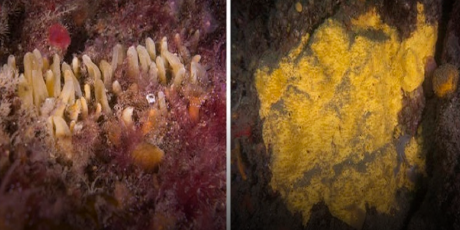Alarming decline of marine sponges in Cork lake shows improvement 15 Jun 2021

New research reveals that the alarming disappearance of marine sponges from one of Ireland’s incredible nature reserves, maybe being reversed.
Scientists from University College Cork (UCC) and the Victoria University of Wellington, New Zealand have been examining the loss of thousands of sponges from Lough Hyne in West Cork.
Lough Hyne is Ireland's only marine reserve – a protected area of the ocean – and it supports more than 1,850 species in just half a square kilometre. Among those species are marine sponges, which are animals that look like plants and attach themselves to rocks, shells and the seafloor. Marine sponges are essential in maintaining marine biodiversity.
Now, research by Professor of Marine Biology at UCC/ERI, Rob McAllen, and Professor of Marine Biology at the Victoria University of Wellington in New Zealand, James Bell, shows that these sponges in the lough shrank by half between 2000 and 2018.
“It's difficult to be certain what caused the change, whether it was a natural event or the result of human activities,” commented Professor McAllen, but recent surveys show there have been signs of a potential natural recovery of the affected species.

Through funding from Ireland's National Parks and Wildlife Service of the Department of Housing, Local Government and Heritage, the researchers established new long-term monitoring stations which showed that the sponges are starting to grow.
“To our knowledge, the sudden disappearance of sponge gardens on this scale has never happened in the lough before. Our new surveys will help us better manage Lough Hyne, but also other deep-sea ecosystems across the world,” commented Professor Bell.
Ireland’s window into an ecosystem rarely explored
Lough Hyne is connected to the Atlantic Ocean by a narrow, shallow channel. Its unique conditions attract scientists from across the world as it allows for a window into one of the most poorly studied ecosystems in the world.
“Between 30 and 150 metres down is the ocean's mesophotic zone. Too deep for scuba divers and above the zone of underwater robots, it's an ecosystem rarely studied; but Lough Hyne allows the world to understand a vital part of the ecosystem of the deep-sea,” stated Profesor McAllen.
The research was published in Science of the Total Environment.